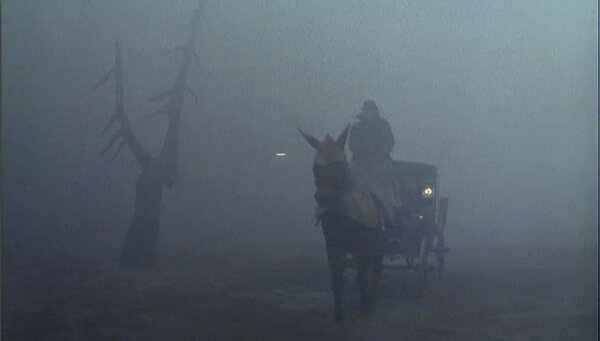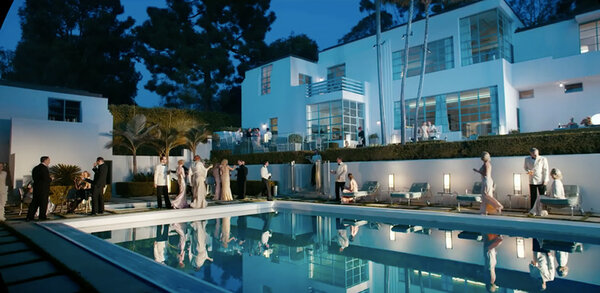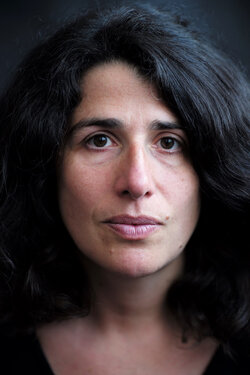The “Manaki Brothers” Festival Seen from Bitola
By Céline Bozon, AFCYesterday evening, tribute was paid to Pierre Lhomme, AFC. He got on stage and made a brief and poignant speech reminding the audience that, in the Manaki Brothers’ days, the cameraman was alone behind the camera. He then said how happy he was that the position is still being celebrated today and that he hoped that cinema would remain the most important thing in the lives of those who make movies.
As I’d just visited Bitola’s high street, I was very moved to see the shots the Manaki Brothers had filmed of it in the manner of the Lumière Brothers.
Especially because I came here for Alain Gomis’ film Félicité that we’d filmed at Kinshasa and whose relationship to that city is important.
It’s a great privilege to be able to reflect upon this profession without having my “nose to the grindstone” and to be able to listen to what others are saying, to have the time to seek out the origin of their ideas, and to compare them with my own thoughts.
This morning, Luca Coassin, an Italian cinematographer, led a Master Class on Giuseppe Rotunno. He showed us excerpts from Luciano Visconti’s White Nights, a film entirely shot in studio, and Federico Fellini’s Amarcord, and especially an excerpt with at least ten minutes of continuous fog.

Coassin began telling the story of how Rotunno simulated fog with large frames of tulle or tarlatan that he placed at varying distances from the camera, and lit them in a particular way and moved them as needed by the shot (if a horse had to pass in front of the camera, for example) and suddenly, a thread began to form before my eyes. A thread that links the real and the fake, cinema and the real. A thread that begins in studios and man-made sets, and that passes through black-and-white films, the stylization of the real par excellence, and that brings us to the 1970s, their soft films and their squelched colours that resemble Fauvism. This thread seeks out sharpness, contour, and the ability to separate, and that’s why it ends in the 1990s, the years where Kodak pushed the contrast of its films to the limit, and my thread’s only way out is to leave silver film and its 24 frames per second behind, as they’re still too gauzy, too blurry, and the thread blossoms out into digital cinematography with its digits, its K, 4K, 8K, 16K. My thread wants to capture the real with its obsession for reality and definition.
Coassin ended his speech and I wonder what Visconti would have done, what Rotunno would have done, with the cameras we have today.
Suddenly, images from Woody Allen’s latest film, Café Society, come to my mind, and the images Vittorio Storaro, ASC, AIC, shot in digital. Storaro has a wild imagination and he takes incredible liberties with colour and how he lights. The first poolside scene is an example of that freedom. I remember how happy and excited I was to see it, all that character, very frank options that you can see, and “fake” light that you can also see. It’s pretty rare.

But the relationship between the rather brutal light (barely diffused, naked Fresnels) and a very sharp digital image results in very aggressive shots.
That aggressiveness fascinated me as much as it challenged me. That way of lighting along with the sharpness of the digital image was very new for me.
Today, every cinematographer has to battle the precision of these new tools, every close-up on a face becomes obscene ; there’s too much definition. That makes us sometimes fall into extremely soft lighting or looking towards lenses of the past for a lost softness, when we don’t simply massively diffuse.
I shot Serge Bozon’s last film, Madame Hyde, using expired Fuji film, which Cinédia had in stock, and whose real sensitivity was 80 ISO instead of 250 ISO, or 250 ISO instead of 500 ISO at night. It was impossible to achieve naturalism under those conditions, as the tool wouldn’t allow it. With that level of sensitivity, everything is fake : the relationship between the windows and the light you let in, the levels, the directions. I didn’t need to strive to achieve stylization because the sensitivity of the film itself pushed me in that direction. I think that’s what my thread meant to say : the tools push us and shape us. We’re not their slaves, but we base ourselves off of them, we’re the “Homo Faber” of Bergson and Arendt.
“It is true that I hear more and more people saying that we have lost the magic of cinema in the passage from film to digital ? Personally, I do not think so, especially if we maintain the history, the knowledge, and the love for the arts that is integral to human creativity.”
Vittorio Storaro, about his work on Woody Allen’s Café Society
“Homo Faber” : Lucas Coassin describes how Rotunno asked the set designers to paint shadows behind the actors. I imagine how complex it must have been to set up and light those tulle frames. I remember Bruno Nuytten discussing with Caroline Champetier the fabrication of density filters just for the skies as needed on set to control day-for-night scenes.
I pick up my thread and I understand where I’d like to be. Digital, film, why not, but I want to remain lively and alert, attentive to the tools so that I can shape them, not be shaped by them, and especially to remain faithful to the set, where the cinematographer’s gesture is born (in his mind and under his hand). I’ve gotten used to computers, they’re everywhere, but the world is before my eyes and it’s in that world that movies are made.
“In all of his films, and in Orpheus in particular, Jean Cocteau untiringly proves to us that in order to know how to make movies, we’ve got to go back to Méliès, and for that, a lot of Light years are going to have to pass.”
Jean-Luc Godard par Jean-Luc Godard, Alain Bergala (ed.), Jean-Luc Godard, Cahiers du cinéma, 1998, vol. 1, p. 253.
- Read or reread an article published in English in Film and Digital Times in which Vittorio Storaro, AIC, ASC, discusses his experience with digital cinematography in Woody Allen’s Café Society.
(Translated from French by Alexander Baron-Raiffe)
 En
En Fr
Fr





